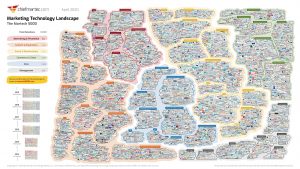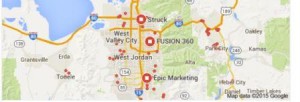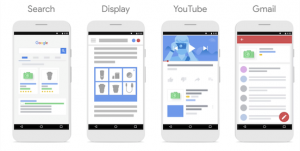— June 30, 2017

Predictive analytics turns your existing data into a roadmap of future user actions. By modeling user behaviour against a range of influences that impact buying decisions, you can use predictive analytics to understand when people are most likely to buy.
This is a big deal for your PPC campaigns, where you want to be investing more of your budget into the moments that matter most. And by automating predictive analytics with custom scripts, you can optimise your budget to adjust for consumer behaviour – before it even happens.
Knowing when users are most/least likely to buy
One of our clients is an online pet retailer, specialising in products like dog beds, clothing and accessories. As with most retailers, this client has days when sales are above average and days when they’re below – without any obvious reason. We wanted to get to the bottom of this so we could make more of the better days and spend less budget on the not-so-good days.
How do we go about this, though?
For us, everything starts with data. Years of collecting data-driven insights tells you a few things about what can impact buyer behaviours – and one of the first things to look at are time factors:
- Times of day, days of week, month of year, etc.
- Public holidays
- Seasons
- Weather
- Commercial events
Each of those factors will have an impact on your sales. With predictive analytics you can pinpoint these impacts and optimise your campaigns to adjust accordingly in the future. For example, if Monday mornings are your most profitable hours of the week, you can automatically increase your bids to reach the widest possible audience during these times. Better yet, you can create a script that tracks your best-performing hours each week and automatically changes your bids if Monday mornings are no longer your most profitable.
Putting predictive analytics into action
Going back to our client, one of the key metrics we wanted to gain insight on was how ROIs are affected by external factors. Dog coats are an important item for our client so we looked at the ROI for these campaigns and weather stood out as a key influencer. It became clear that ROI dropped when the weather was dry and/or sunny and increased when it was wet and/or cold.
Here’s what we found for coat sales vs rainfall:

As you can see, sales fluctuate somewhat with lower rainfall but look how uniform sales rise and fall around higher levels of rainfall. This reveals a major influencer on buying decisions for our client and we’re now able to predict sales patterns based on weather forecasts for this product.
We’re only talking about one specific product category and one influencer here, too. We can apply this same strategy to all of our client’s most important product categories and map them against multiple influencers to find similar patterns.
Automating the process
Predictive analytics is huge step forward in optimising PPC campaigns. Instead of reacting to things that have already happened, you’re using these data sets to pre-empt future buying decisions so you’re ready to make the most of them.
The problem with predictive analytics is you can’t do this manually at scale. Frantically changing bids for thousands of product types based on weather forecasts isn’t what we consider an effective process.
Instead, our data scientists engineer custom scripts to automate this process, based on our original findings. So when we gain insights into how weather affects sales for thousands of different product types, your budget automatically increases when people are most likely to buy. Which means your campaigns are always optimised for maximum sales, whatever the weather.
Digital & Social Articles on Business 2 Community
(57)
Report Post





